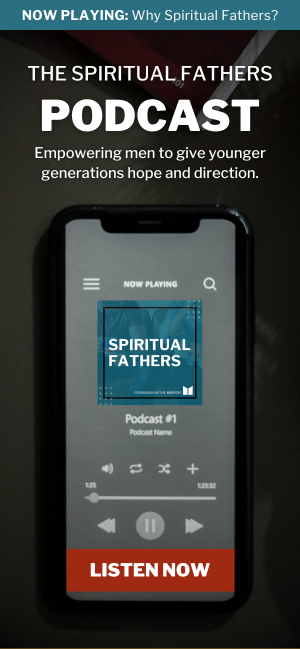Overcoming Spiritual Inertia
Did you ever get a chance to watch the space shuttle launch? It was pretty amazing to see this mammoth machine strapped to external rocket boosters and a huge fuel tank, sitting on its tail, pointed toward the sky. The voices of the controllers, calm and measured, ticked off checkpoints on the countdown to zero.
“Ignition!” Steam escaped and smoke billowed. The shuttle shuttered for a moment or two and then—barely perceptibly—it began to lift off the pad.
At first it would move so slowly, you’d almost expect it to fall over. After all, once it left the ground, it was sitting on the hot gases from the rocket engines. And then, “The shuttle has cleared the tower.” And it would definitely go up, moving faster and faster. Within minutes, it was traveling 17,000 miles per hour. From a hundred miles away, spectators could see the bright flame as it rose in an arc toward orbit.
The shuttle’s fuel tank was enormous. It held 500,000 gallons of rocket fuel, which all burned up in about five minutes. Then the shuttle would travel another four million miles on a little bucket of fuel.
The greatest amount of energy required in nature is that amount required to overcome inertia and put a stationary object—like the shuttle—into motion. Overcoming spiritual inertia is the same way. We are surrounded by men who are spiritually stationary.
Offering Something of Value
There is a tremendous volume of noise in our lives. We live in a world of fast career tracks, high speed internet, and easy credit. All week long men are bombarded by the media, their coworkers, their boss, their family—everybody wants something.
It’s no wonder men rarely take time for spiritual self-examination. Many attend church only out of obligation, if at all. Others invest themselves in church hoping to feel needed and successful. They are spiritually stationary. They are focused on themselves. A huge challenge for leaders is to get guys out of their comfortable patterns.
Discipleship is a spiritual journey, and as the saying goes, “A journey of a thousand miles begins with the first step.” So how do we get men to take that first step—or for some, the next step—in this spiritual journey? Having a compelling vision for your men’s ministry will be a good start, but what’s next?
We have to engage men’s attention by offering them something they’ll find valuable. Tired men need to believe that getting involved will be worth the effort. Busy men need to believe that of all the opportunities clamoring for their time, the one you are offering them is top notch. In short, you have to show them the value of getting involved.
When you create value with an activity, you create momentum, the first gear that propels the conveyor belt of your discipleship process.
Often, we provide value for men with some kind of experience or activity: a men’s conference, retreat, breakfast or barbecue. But it doesn’t have to be a big event. Often, the most valuable thing to a man is some personal one-on-one time, like inviting him to breakfast or lunch. Look for anything that compels a man to take a step forward in his spiritual journey.
There is no shortage of activities for men today. A little analysis will give you the insights you need to get your men’s attention. You’ll need to answer these two questions:
- What types of men are we trying to reach?
- What kinds of things will interest them?
Know Your Men
As you devise a strategy to create value among your men, you will want to take some time to categorize the men in your church—perhaps by age or life situation. Man in the Mirror has a typology that many churches use to help target their efforts. Every man in your church fits into one or more of the following categories:
- Men who need a relationship with Christ—Romans 6:23; 1 John 5:11-12
- Men who are cultural Christians (men on the “fringe”)—Matthew 13:22
- Men who are biblical Christians, or want to be—Matthew 13:23
- Men who are leaders, or want to be—2 Timothy 2:2
- Men who are hurting—Galatians 6:2
For more about the 5 Types of Men, read our full post here.
If you were to place each type of man across the Wide-Deep Continuum we discussed previously, it would look like this:

The Wide-Deep Continuum serves as a metaphor for a man’s spiritual development. As a man moves forward in his spiritual journey toward Christ, he moves across this continuum as well.
Planning and Managing Expectations
FREE Ministry Audit Worksheet
This is a helpful planning tool that helps you take into account what group of men you’re trying to reach with any event you’re planning for your men. Use this downloadable Ministry Audit Worksheet straight from our No Man Left Behind Live training. The rest of the post will lead you through filling this out.
There is no such thing as a one-size-fits-all men’s activity. Use the free Ministry Audit worksheet above to help you make a list of the kinds of activities you think each type of men might enjoy.
This ministry tool can help you manage expectations for your events as well. In each section there is a place to write what percentage of your men fit into each category (remember that hurting men are in all four other categories).
One year, a church of about eight hundred invited Man in the Mirror to conduct a Success That Matters men’s event. Over 120 men attended the event. The follow-up was very well received, and the event created a lot of momentum.
The next year, they did another men’s event, and this time Brett Clemmer was called on to conduct Leading a Mission Driven Life. Brett arrived and met with the leadership team, who were downcast. They only had seventy-five men registered for the event and couldn’t figure out why. But things were better than they thought.
Brett drew them a makeshift Ministry Audit on a whiteboard, and asked the leaders how many of their men fit into each group. He wrote down their answers. They determined that of the 350 men in their church, 230 either needed Christ or were cultural Christians; the remaining 120 were either biblical Christians or leaders.
Then Brett explained that the two events were targeted for different types of men. The first event was a wider focus and the second was a deeper focus, targeting biblical Christians and leaders. So the seventy-five men coming to the event represented over half of the target group for the event! In other words, even though the total number in attendance was lower, the percentage of men in the target group was actually higher.
Utilizing the Ministry Audit helped them manage their expectations about how many men should come to an activity. It could help you too!
Big Idea: The key to help a stationary man get moving is to create value for him. Know your men, then reach them in ways that are relevant to their lives.
♦♦♦









